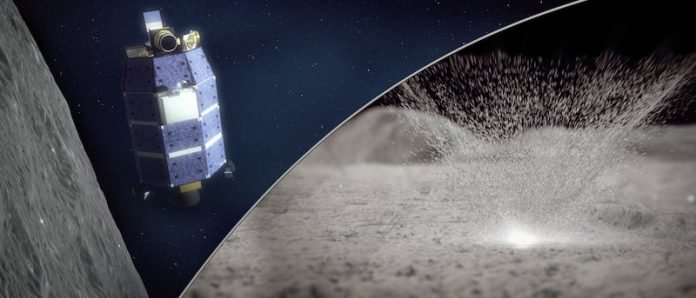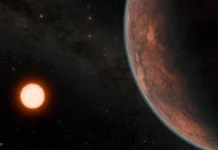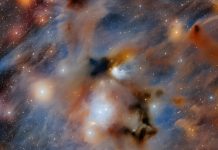
In a new study, researchers have observed that short-lived water vapors caused by streams of meteoroids striking the Moon.
The finding may help scientists understand the history of lunar water and provide valuable information about the resource for sustaining long-term space exploration.
The research was conducted by researchers from NASA and the Johns Hopkins University Applied Physics Laboratory in Laurel, Maryland.
In the study, the team observed the events using data from NASA’s Lunar Atmosphere and Dust Environment Explorer (LADEE).
LADEE was a robotic mission that orbited the Moon to collect information about the structure and composition of the thin lunar atmosphere.
The mission orbited the Moon from October 2013 to April 2014. It also aimed to determine whether dust is lofted into the lunar sky.
The researchers traced recent meteoroid streams and surprisingly found evidence of four new meteoroid streams.
They found that to release water, the meteoroids had to penetrate at least 3 inches below the surface.
Underneath this bone-dry top layer, there is a thin transition layer, and then a hydrated layer.
Water molecules likely stick to bits of soil and rock, called regolith in the hydrated layer.
The team calculated that the hydrated layer has a water concentration of about 200 to 500 parts per million or about 0.02 to 0.05 percent by weight.
This shows that the layer is much drier than the driest terrestrial soil.
The team suggests that the material on the lunar surface is fluffy, and even a tiny meteoroid could release a puff of vapor.
They predict that when a stream of meteoroids rains down on the lunar surface, the liberated water will enter the exosphere and spread through it.
About two-thirds of that vapor escapes into space, but about one-third lands back on the surface of the Moon.
The researchers suggest that meteoroid impacts can release water faster than that from reactions that occur when the solar wind hits the lunar surface.
The lead author of the study is Mehdi Benna of NASA’s Goddard Space Flight Center in Greenbelt, Maryland, and the University of Maryland Baltimore County.
The study is published in Nature Geoscience.
Copyright © 2019 Knowridge Science Report. All rights reserved.



